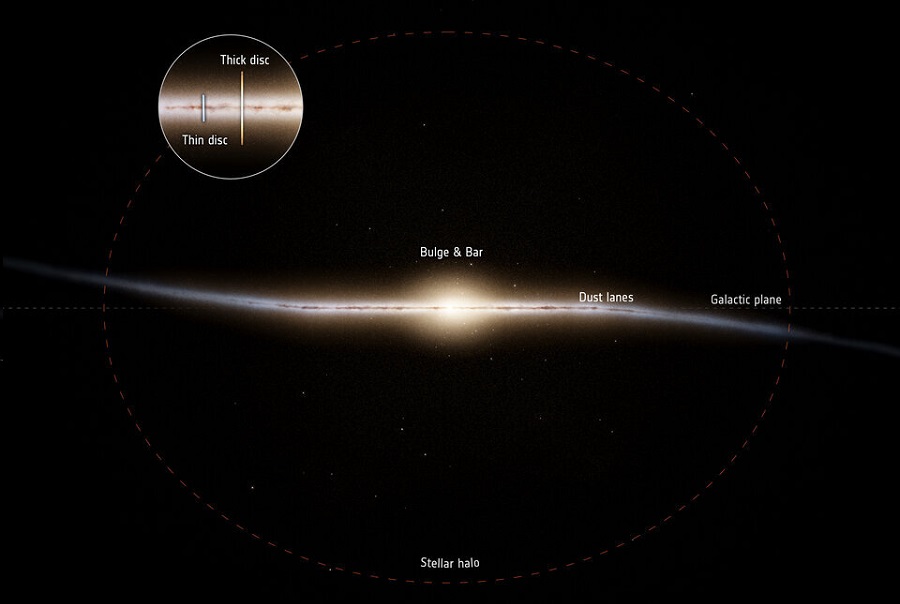Astronomers have discovered some of the oldest stars in the Milky Way and tracked their positions and movements, and found the very “womb” of the Milky Way. This information provided new insight into how our own galaxy formed about 13 billion years ago.

Researchers have recently published a detailed understanding of how our galaxy evolved during its most turbulent and chaotic period, some 11 billion years ago. They were able to track galactic collisions that radically changed the Milky Way, bringing in new stars and gas, and warping the disk of our galaxy, where the spiral arms, including the one containing the Solar System, are located.
Merger of protogalaxies
The thin disk is 105,000 light-years wide and no more than 1,500 light-years thick, and star formation is still taking place here. There is also a thick disc that envelops most of the thin disc, but has less density. At the center of the Milky Way is a bar-like structure that tends to contain most of the old stars.
A new study based on simulations shows that the thick disk existed almost from the beginning. We can’t just point to the core and say it was the beginning of the Milky Way. Simulations showed that three or four protogalaxies, which formed next to each other, played a role in the formation of our galaxy. They interacted at a distance of no more than a thousand light years, and then merged into a compact core — this was the “womb” around which the Milky Way began to form.
Searching for the womb of the Milky Way
To hunt down this ancient group, the team had to use data from the European Space Agency’s Gaia satellite to study red giants. But in order to understand the age of a star, the astronomer had to find out how much “polluted” it is. The very first generation of stars was created with only hydrogen and helium, and as they went supernova, they created heavier elements, so each new generation has higher and higher “metallicity”.
Based on the collected data, it was possible to identify more than two million red giants. From there, the team was able to find the most metal-poor, oldest stars, older than 12.5 billion years and all within 30,000 light-years of the center of the Milky Way. These objects could had formed even before the birth of our galaxy, which means that they carry the history of the early universe.
The team hopes to study the ancient stars in more detail to understand their chemical evolution and motion. This could answer more questions about the formation of the Milky Way, including what was the exact number of protogalaxies that merged together.
We previously reported how “relatives” of the Milky Way’s mysterious filaments have been spotted in other galaxies.
According to The Astrophysical Journal

